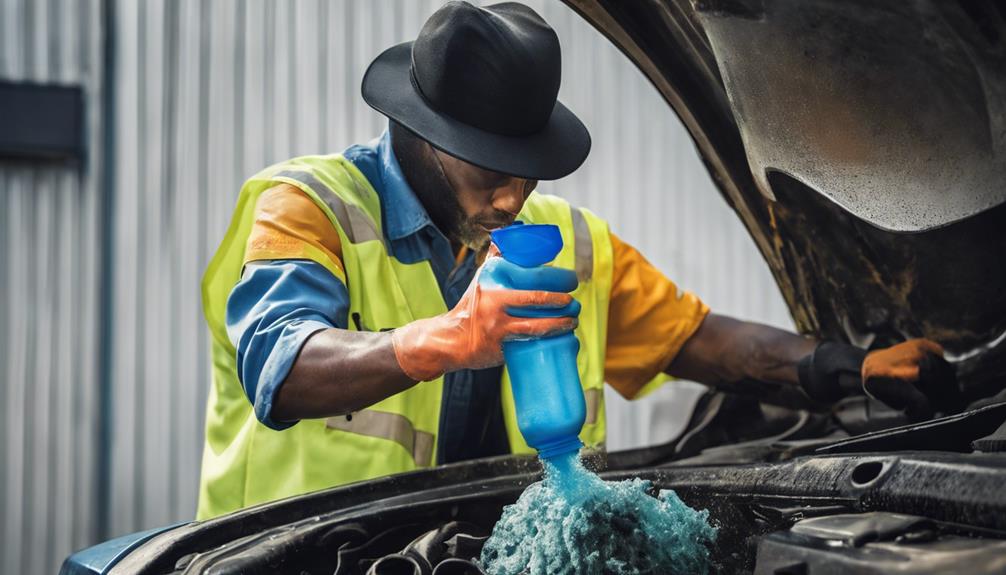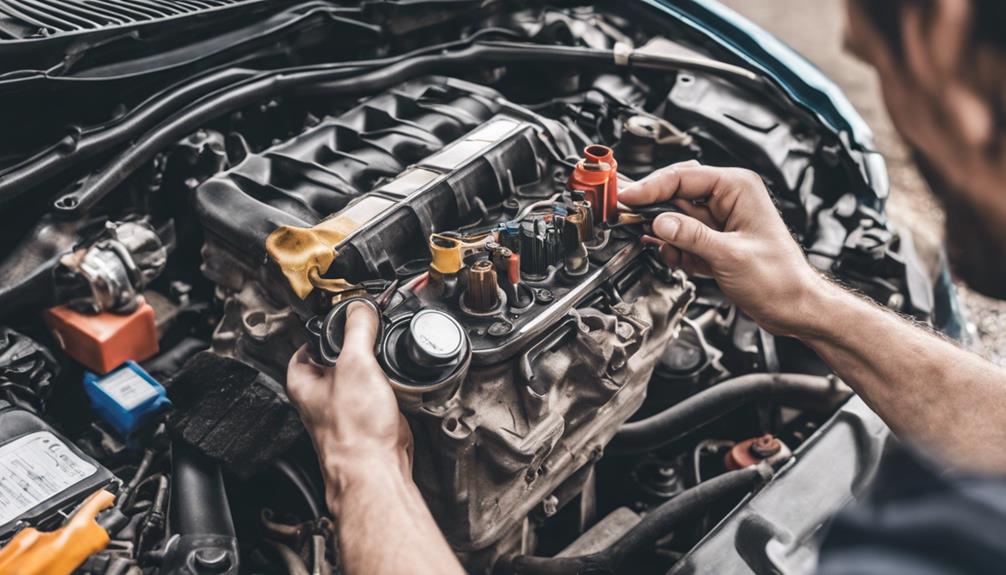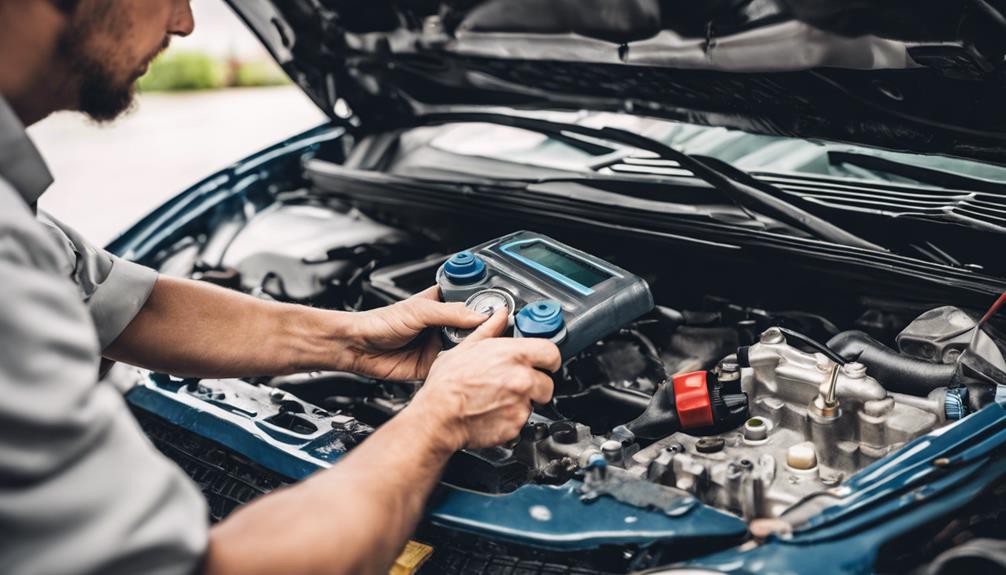Imagine your car’s cooling system as a silent guardian, working tirelessly to keep your engine running smoothly in the scorching heat of McAllen, TX. But what happens when this crucial system starts to falter? Well, that’s where Cooling System Services come into play. From diagnosing mysterious leaks to ensuring your radiator is in top-notch condition, these services can be the lifeline your vehicle needs. So, before your engine overheats or your car leaves you stranded, it might be worth considering a closer look at what McAllen’s cooling system experts have to offer.
Key Takeaways
- Regular cooling system maintenance in McAllen Tx prevents costly repairs and ensures optimal performance.
- Coolant flushes every 30,000 to 50,000 miles extend critical component life and prevent overheating.
- Prompt radiator repairs in McAllen Tx address leaks and prevent engine damage or breakdowns.
- Thermostat replacement in McAllen Tx optimizes coolant flow, preventing overheating and maintaining engine performance.
Importance of Cooling System Maintenance
Regular maintenance of your cooling system is crucial to minimize energy costs and prevent major issues. Neglecting maintenance can lead to accumulated dirt and debris, which negatively impacts the system’s performance, ultimately resulting in higher utility bills. By investing in routine maintenance services, such as proper cleaning and function checks, you can ensure optimal cooling system performance.
Yearly maintenance is essential for preventing major breakdowns and ensuring efficiency. Timely inspections and tune-ups help identify and address potential issues before they escalate into costly repairs. Additionally, ongoing maintenance can extend the lifespan of your cooling system, saving you money in the long run.
Professional maintenance services for your cooling system not only keep it running smoothly but also contribute to a more energy-efficient home. By staying proactive with maintenance, you are taking a proactive approach to controlling your energy costs and avoiding unexpected breakdowns. Make sure to schedule regular maintenance to keep your cooling system in top condition.
Signs of Cooling System Issues
When detecting potential cooling system issues, an overheating engine serves as a common and critical indicator. If you notice your engine temperature creeping into the red zone on the dashboard temperature gauge, it’s essential to address the cooling system promptly. Low coolant levels or coolant leaks are also warning signs that shouldn’t be ignored. Keep an eye out for steam or smoke emanating from the engine bay, as this could indicate serious cooling system malfunctions. Additionally, unusual noises such as grinding or squealing coming from the engine may point towards cooling system troubles that need attention.
Regularly monitoring your cooling system and coolant levels can help you catch issues early on before they escalate into more significant problems. If you experience any of these signs or symptoms, it’s advisable to have a professional inspect and diagnose your cooling system to prevent potential damage and costly repairs down the line.
Benefits of Coolant Flush

For optimal engine performance and longevity, a coolant flush is essential to remove old, degraded coolant and prevent potential damage from corrosion and buildup. Over time, coolant can break down, losing its ability to protect your engine from corrosion. A coolant flush removes the old coolant, along with any contaminants present in the system, ensuring that your engine stays cool and operates at the right temperature. This process helps prevent overheating, which can lead to costly repairs and engine damage. By flushing the coolant system, you also eliminate air pockets that can impede heat transfer, allowing for more efficient cooling. Fresh coolant improves the system’s ability to regulate temperature, extending the life of critical components such as the water pump and radiator. To maintain the effectiveness of your cooling system and avoid potential breakdowns, it is recommended to schedule coolant flushes every 30,000 to 50,000 miles.
Understanding Radiator Repairs
To ensure optimal function of your vehicle’s cooling system, understanding radiator repairs is essential. When it comes to maintaining your radiator, here are some key points to keep in mind:
- Identifying Issues: Radiator repairs address problems like leaks, clogs, and corrosion that can hinder the cooling system’s efficiency.
- Common Problems: Be aware of signs such as overheating, coolant leaks, and poor heat dissipation, as these often indicate radiator issues.
- Repair Tasks: Radiator maintenance involves tasks like system flushing, part replacements, and resolving coolant issues to keep the system running smoothly.
- Importance of Timely Repairs: Neglecting radiator repairs can result in engine damage, overheating, and even potential breakdowns. It is crucial to address radiator issues promptly to avoid costly cooling system failures.
Understanding these aspects of radiator repairs will help you maintain your vehicle’s cooling system effectively, ensuring optimal performance and preventing major issues down the road.
Can Your Cooling System Services Improve My 4X4’s Performance?
If you’re wondering whether McAllen repair shop performance enhancement can benefit your 4X4’s performance, the answer is yes. Regular cooling system services can ensure that your engine stays at the optimal temperature, preventing overheating and minimizing wear and tear. This, in turn, can improve your vehicle’s overall performance and longevity.
Can Lift Kits Affect My Vehicle’s Cooling System?
Yes, lift kits installation service can affect your vehicle’s cooling system. The added height can create more wind resistance, causing the engine to work harder and potentially leading to overheating. It’s important to consider the impact on your cooling system when installing a lift kit.
Thermostat Replacement Guide

When it comes to a thermostat replacement guide, understanding its function is key. The thermostat plays a crucial role in regulating the engine’s temperature by managing coolant flow. Knowing the steps for replacement ensures your cooling system operates at its best.
Thermostat Function Explained
Understanding the intricate role of the thermostat in your vehicle’s cooling system is essential for maintaining optimal engine performance. The thermostat plays a crucial role in regulating the engine temperature by controlling the flow of coolant. Here are four key points to consider about the thermostat’s function:
- Regulating Temperature: The thermostat ensures the engine operates within the optimal temperature range by adjusting the flow of coolant.
- Preventing Overheating: A properly functioning thermostat prevents the engine from overheating by allowing coolant to circulate when needed.
- Ensuring Efficiency: Malfunctioning thermostats can lead to inefficient cooling system operation, affecting overall engine performance.
- Impact on Performance: Faulty thermostats can cause the engine to run too hot or too cold, impacting the vehicle’s performance and potentially causing damage.
Steps for Replacement
Considering the importance of maintaining a properly functioning cooling system, the process of replacing the thermostat begins with meticulous steps to ensure optimal engine performance. To start, drain the coolant carefully to prevent spills and environmental contamination. Next, remove the old thermostat, making sure to clean the housing thoroughly to remove any debris or gasket material. Install the new thermostat following the manufacturer’s specifications precisely to guarantee proper functionality. Once the new thermostat is in place, refill the coolant with the recommended type and quantity. Remember, symptoms of a faulty thermostat include engine overheating and inconsistent temperature gauge readings. Regular thermostat inspection and replacement are crucial parts of cooling system maintenance to prevent issues like reduced fuel efficiency and engine damage.
Top Tips for Engine Cooling
To ensure optimal engine performance and prevent overheating, proper maintenance of engine cooling system components is imperative. Here are some top tips to keep your engine cooling system in top shape:
- Regular Inspections: Periodically check the radiator, hoses, and water pump for any signs of wear or leaks. Addressing issues early can prevent more significant problems like engine overheating.
- Maintain Proper Coolant Levels: Ensure the coolant reservoir is filled to the recommended level with a mixture of antifreeze and water. This mixture helps regulate engine temperature in various climates.
- Monitor the Cooling Fan: Make sure the cooling fan is functioning correctly to help dissipate heat from the radiator. A malfunctioning fan can lead to engine overheating, so prompt repairs are crucial.
- Follow Manufacturer Guidelines: Adhere to the manufacturer’s recommended maintenance schedule for flushing the cooling system and replacing coolant. This helps prevent costly repairs and ensures optimal engine cooling efficiency.
Frequently Asked Questions
How Often Should the Cooling System Be Serviced?
You should service your cooling system annually to maintain peak performance and prevent breakdowns. Establishing a routine maintenance schedule is crucial for ensuring the efficiency and longevity of your cooling system. Neglecting this vital aspect can result in costly repairs and potential engine issues. By adhering to a regular maintenance frequency, you can promptly address any arising problems before they escalate, keeping your vehicle running smoothly in any climate.
What Does Cooling System Serviced Mean?
Understanding maintenance involves regularly checking components like the cooling fan, water pump, thermostat, and radiator to ensure optimal engine performance. Maintenance tasks include inspecting, flushing, and filling the system, as well as pressure testing and replacing components as needed. Neglecting cooling system service can lead to costly repairs and major engine overhauls. Prioritizing timely maintenance is crucial to prevent issues like antifreeze breakdown and radiator leaks.
How Will You Check the Cooling System of an Engine?
To check the cooling system of an engine, start by monitoring temperature fluctuations and inspecting the radiator. Ensure coolant levels are correct, look for leaks in hoses and connections, test the thermostat’s functionality, and examine the radiator cap. Utilize a cooling system pressure tester to detect internal leaks that may cause overheating. Regular checks help maintain optimal engine cooling performance and prevent issues down the road.
How Do You Service an Engine Cooling System?
When servicing an engine cooling system, start with a thorough flushing process to remove old coolant and debris. Check coolant levels and inspect the thermostat for proper function. Maintenance of the radiator is crucial, including pressure testing for leaks. Ensure the system has the right coolant mix and proper circulation. Regularly check and replace the radiator cap to maintain pressure levels. This routine upkeep prevents overheating, corrosion, and engine damage, ensuring peak performance and longevity.

No Responses